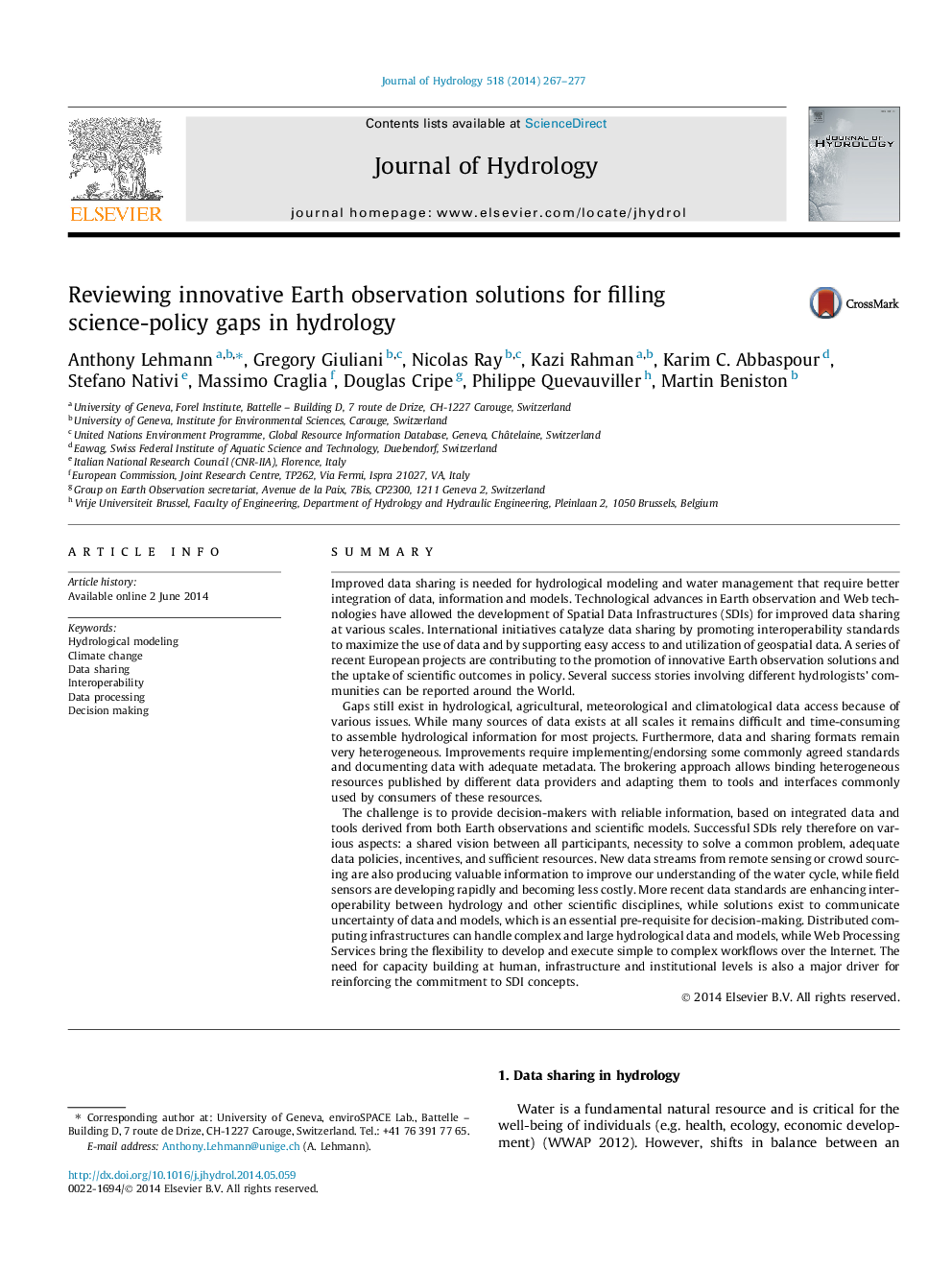| کد مقاله | کد نشریه | سال انتشار | مقاله انگلیسی | نسخه تمام متن |
|---|---|---|---|---|
| 4575990 | 1332902 | 2014 | 11 صفحه PDF | دانلود رایگان |
• We review the use of Spatial Data Infrastructure in hydrology.
• We identify data gaps between science and policy.
• We explore new solutions to bring hydrological modeling closer to policy makers.
SummaryImproved data sharing is needed for hydrological modeling and water management that require better integration of data, information and models. Technological advances in Earth observation and Web technologies have allowed the development of Spatial Data Infrastructures (SDIs) for improved data sharing at various scales. International initiatives catalyze data sharing by promoting interoperability standards to maximize the use of data and by supporting easy access to and utilization of geospatial data. A series of recent European projects are contributing to the promotion of innovative Earth observation solutions and the uptake of scientific outcomes in policy. Several success stories involving different hydrologists’ communities can be reported around the World.Gaps still exist in hydrological, agricultural, meteorological and climatological data access because of various issues. While many sources of data exists at all scales it remains difficult and time-consuming to assemble hydrological information for most projects. Furthermore, data and sharing formats remain very heterogeneous. Improvements require implementing/endorsing some commonly agreed standards and documenting data with adequate metadata. The brokering approach allows binding heterogeneous resources published by different data providers and adapting them to tools and interfaces commonly used by consumers of these resources.The challenge is to provide decision-makers with reliable information, based on integrated data and tools derived from both Earth observations and scientific models. Successful SDIs rely therefore on various aspects: a shared vision between all participants, necessity to solve a common problem, adequate data policies, incentives, and sufficient resources. New data streams from remote sensing or crowd sourcing are also producing valuable information to improve our understanding of the water cycle, while field sensors are developing rapidly and becoming less costly. More recent data standards are enhancing interoperability between hydrology and other scientific disciplines, while solutions exist to communicate uncertainty of data and models, which is an essential pre-requisite for decision-making. Distributed computing infrastructures can handle complex and large hydrological data and models, while Web Processing Services bring the flexibility to develop and execute simple to complex workflows over the Internet. The need for capacity building at human, infrastructure and institutional levels is also a major driver for reinforcing the commitment to SDI concepts.
Journal: Journal of Hydrology - Volume 518, Part B, 10 October 2014, Pages 267–277
